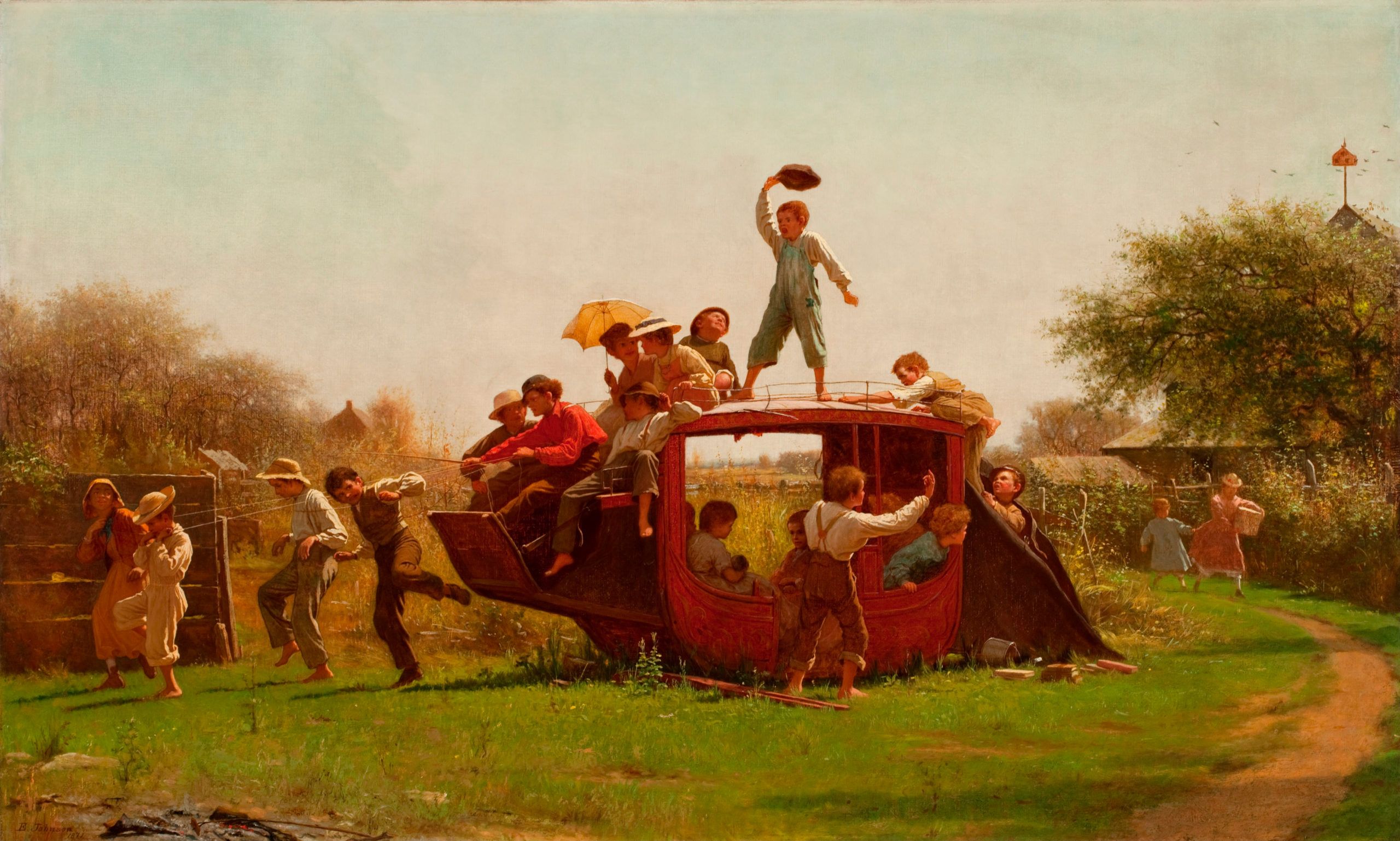
Introduction to “The Old Stagecoach” by Eastman Johnson
“The Old Stagecoach,” painted in 1871 by Eastman Johnson, is a rich and dynamic portrayal of post-Civil War life in America. It highlights forward-thinking ideals while acknowledging the lasting, brutal impact of the Civil War in the United States.
Many of Eastman Johnson’s paintings depict “slice-of-life” scenes set in the United States before and after the Civil War. At Fine Art Publishing, we’re proud of our vast selection of painting and art from acclaimed artists like Eastman Johnson. Read on to learn more about his stagecoach journey painting.
Description of “The Old Stagecoach”
As you may notice, “The Old Stagecoach” solely portrays children, which is perhaps its most striking feature. The children are boisterously playing in and around an abandoned stagecoach while a schoolhouse looms in the background, suggesting the children have just finished their school day.
At first glance, “The Old Stagecoach” gives a light-hearted and charming impression. However, Eastman includes subtle social and ideological commentary through various aspects of this painting.
Childhood as a Theme
By showing the children engaged in play, “The Old Stagecoach” reflects a paradigm shift in American society. Before the 1800s, most people did not even acknowledge childhood as a developmental stage. Instead, parents expected their children to help them with household chores as soon as possible. As a result, they treated them like miniature adults, discouraging any notion of play.
“The Old Stagecoach” sharply contradicts this earlier American attitude. Its rendering of lively children at play highlights the new societal perception of childhood as a precious, idyllic stage of life.
Reflections on Post-Civil War Life
“The Old Stagecoach” also acknowledges the nation’s struggles to adjust to post-Civil War life. Specifically, the painting depicts a Black child standing among three other children pretending to pull the carriage.
However, unlike the other children, the Black child has the reins around her neck. It seems as though Johnson used this child to comment on the violent racial tensions of the post-Civil War era. Nonetheless, Johnson likely intended for all the children to symbolize hope for the country’s long road to recovery following the war.
Furthermore, the stagecoach itself quite tangibly evokes the Reconstruction era. The old, collapsing stagecoach is a relic overrun with children. This poignant image conveys a new generation of Americans moving on from the past.
Background of “The Old Stagecoach”
Before Eastman Johnson painted “The Old Stagecoach,” his career was at an all-time low. One day, while hiking in New York, he stumbled across an abandoned stagecoach. Moved, Johnson sketched and measured the stagecoach. He then returned to Nantucket, where several local children posed in his studio and helped him finish “The Old Stagecoach.”
Legacy of “The Old Stagecoach”
“The Old Stagecoach” revived Johnson’s dwindling career. Many consider the painting his second masterpiece following “Negro Life at the South,” which he painted in 1859. “Negro Life at the South” depicts the day-to-day life of Black slaves in the South. Like “The Old Stagecoach,” its images are open to interpretation.
Interested in the style and themes of Eastman Johnson and other similar artists? Like Johnson, Morgan Weistling’s paintings tell compelling narratives of early American life. Learn more about Morgan Weistling and our Fine Art Publishing collections by visiting our blog or contacting us today at 520-274-4992.